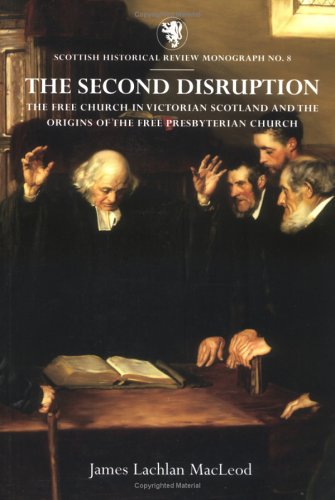Scottish Historical Review Monograph
1 total work
The Victorian period in Scotland was remarkable, with rapid changes and immense wealth coexisting alongside entrenched conservatism and great poverty. For the churches also, the Victorian period was a time of transformation - with every assumption being challenged and tested. In this context it is not surprising that some churches fragmented, and the Free Church was one of them. Founded at the Disruption of 1843, the Free Church was to be one of the dominant forces in Victorian Scotland, and yet even as it exercised this power it began to unravel. Fifty years after its birth, the Free Church experienced its own disruption. Thousands of people, mostly Gaelic-speaking highlanders, deserted the Free Church to form the Free Presbyterian Church in 1893. This book analyzes the events leading up to the Second Disruption. The author places this event in its ecclesiastical context, arguing that the Second Disruption was a product of the Liberalization of attitudes towards the creed and theology in the Free Church.
He also argues that the split of 1893 was a result of the fundamental divided in Scottish society between highlands and lowlands, and that the fashionable pseudo-science of race played an important role in forming opinions among significant sections of the lowland Free Church.
He also argues that the split of 1893 was a result of the fundamental divided in Scottish society between highlands and lowlands, and that the fashionable pseudo-science of race played an important role in forming opinions among significant sections of the lowland Free Church.
